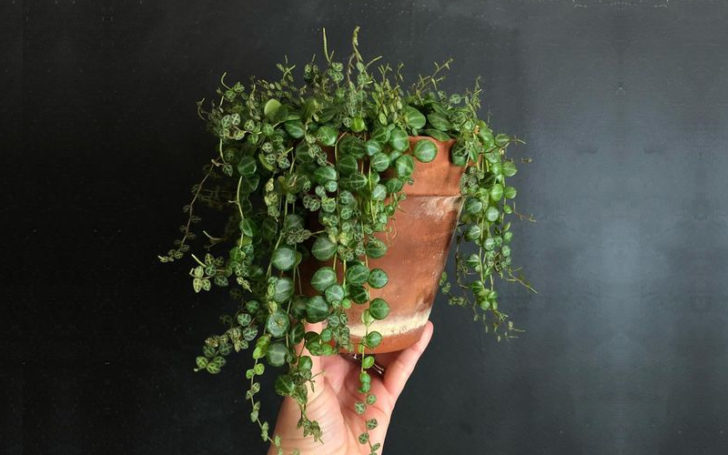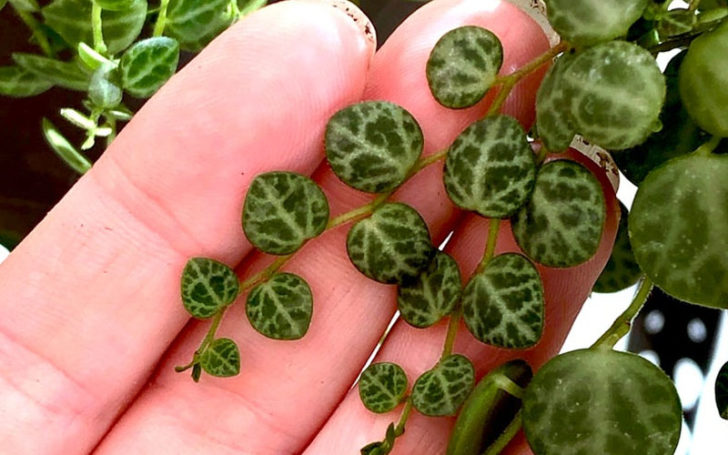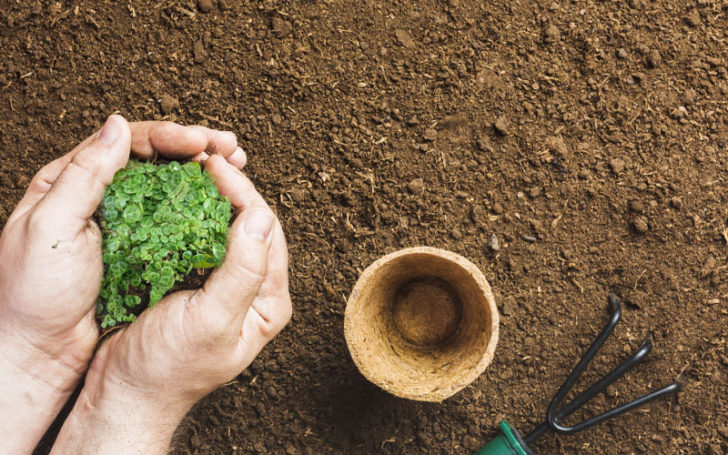Garden
11 tips for caring Peperomia Prostrata – Personal lawn guide – Bringing String of Turtles Plant home
About Peperomia and Peperomia Prostrata:
Peperomia (radiator plant) is one of the two large genera of the family Piperaceae. Most of them are compact, small perennial epiphytes growing on rotten wood. More than 1500 species have been recorded, occurring in all tropical and subtropical regions of the world, though concentrated in Central America and northern South America. A limited number of species (around 17) are found in Africa.
Description
Though varying considerably in appearance (see gallery below), these species generally have thick, stout stems and fleshy leaves, sometimes with epidermal windows. Peperomia flowers typically come in yellow to brown conical spikes.
These tropical perennials are grown for their ornamental foliage. They are mostly natives of tropical America. They are compact and usually do not exceed 30 cm (12 in) in height. They vary considerably in appearance. Some have threadlike, trailing stems and some have fleshy, stout stems.
The leaves are smooth and fleshy and may be oval with the leafstalk at or near the center of the leaf blade, or they may be heart-shaped or lance-shaped; their size may vary from 2.5–10 cm (1–4 in) long. They may be green or striped, marbled or bordered with pale green, red or gray, and the petioles of some kinds are red. The tiny flowers are unnoticeable, and they grow in the form of cordlike spikes. The fruit is a berry that eventually dries out and shows the pepper-like seed.
Horticulture
Peperomias are grown for their ornamental foliage and sometimes for their attractive flowers (Peperomia fraseri). Except for the succulent species, they are generally easy to grow in a greenhouse.
The ASPCA includes many peperomia species on the list of plants that are non-toxic to pets.
Propagation
These plants can be propagated by seeds, by cuttings, or by dividing. Peperomia cuttings root easily.
Plants can be divided and repotted. They are removed and separated into smaller pieces, each with a few roots attached. Leaf or stem cuttings can also be taken in the spring or summer. The lower leaves of the shoots are removed and a cut is made below the bottom node (joint).
They are then laid on a bench for an hour or two to allow a protective callus tissue to form over the cuts. They are then inserted in a propagating case with bottom heat of 21–24 °C (70–75 °F). It is best not to seal the top completely, as the plants are semi-succulent in nature and excessive humidity is detrimental. When enough roots have formed, cuttings can be planted in 75 mm (3 in) pots or in hanging baskets.
The peperomia plant is a smart choice for beginner houseplant enthusiasts. Not only are they forgiving plants that tolerate some benign neglect, but the amazing variety of colors and textures available within species means you can create an interesting collection of plants for any style and space, all requiring the same care.

Green areas such as gardens and lawns in or around the houses are the most attractive parts that not only enhance the beauty of the environment, but also help health, as it is said NATURE IMPROVES HEALTH.
However, not all houses and areas are large enough to have separate lawns, and they also have meadows and parks quite far from the living area. In all these cases Peperomia Prostrata seems to be the most practical solution. In this regard, it can be a great plant for those who do not want to decorate the greenery with fake plants. (Peperomia Prostrata)
Peperomia Plant:

Peperomia is not a plant, but belongs to a biological genus Piperaceae family. This single genus has more than 1,000 registered species famous for their distinctively shaped, textured and leaf arrays and easy growing conditions.
Do you know: Peperomia plants don’t need seasonal care as they are small perennial epiphytes, which means they are whole-year plants and can cascade very easily.
Q: What is Epiphyte?
Ans: Epiphyte is a type of plant that grows on rotten trees, the surface of other plants, and expand on the water and nutrients sucked from other plants.
Looking for “where to buy peperomia plant for sale”? For your information, let’s say it’s easily available anywhere to buy online. You can also find it at nurseries near you.
Peperomia Prostrata – Strings of Turtle Plant:

The common name of Peperomia Prostrata is Tortoise Rope Plant. It is so named because of the threads on the leaves that look like spots of tortoise skin.
Do you know: There is specie called watermelon peperomia as its leaves resemble a watermelon.
Scientific name: Peperomia Prostrata B.S Williams
Genus: Peperomia
Common name: Strings of Turtle
Plant type: Exotic plant / Epiphyte plant
Native to: Rainforest of brazil
How to spot? It has small leaves with patterns like turtleback.
How to take care? Read the guide in the following lines:
It comes in one of the Radiator Plant Peperomia species, as it is native to forests, so while it prefers to grow in cool, moist, wet environments it is quite rare.
Taking Care of Peperomia Prostrata Strings of Turtle Plant – Personal Home Garden tips:

Well, just like Rhaphidophora Tetrasperma, it’s a great houseplant with an urge to live and survive; therefore it is not very difficult to maintain. Some very basic things will help cascade this plant.
1. Propagate Peperomia Prostrata:

Care begins at the very beginning of planting the Prostrata plant. Talking about Prostrata Peperomia, it can also be propagated by root cutting. Make sure the stem you choose is attached to the petiole of the leaves and is 2 to 3 inches long.
Take a small mini succulent pot for this purpose, fill it with well-drained and moist soil. Fill the top with worm casting and insert the cut into it. The placement of the pot is necessary to consider that it should receive bright light. Also, make sure the temperature around the plant is 68° Fahrenheit for easy propagation.
Soon, the cutting will release the rooting hormone that will help the plant grow faster.
2. Peperomia Prostrata growth and size:

“For Peperomia Prostrata Care, you don’t need big space and big pots.”
Basically, when you choose a pot, it’s not just the size of the sprouts that matters, but how tall the plant will be when it grows. Here the tortoiseshell plant is small and is considered a miniature peperomia plant. Its leaves are cascading to be only an inch wide while having the juice with a lush texture.
It looks very decorative and you can find many great flower pots such as the Succulent Wall Hanging Frame to grow them in your home. You can find small flower pots made of wood for office use and decorate your desk, lounge table or even nightstands. They look so great.
Q: Is Peperomia Prostrata a Succulent?
Ans: Yes, Peperomia Prostrata is a succulent plant with juicy leaves, having patterns resembling patterns of the turtleback.
3. Peperomia Flower & String of Leaves Care:
Not all Peperomia produce flowers, and even if they do, the flowers are of no significant value and produce no fragrance. But their creamy tones make them look nice and beautiful. On the other hand, if we talk about the series of leaves, they have cute patterns like the back of a turtle.
The color of the leaves can be different from each other, they are very beautifully textured in maroon, deep purple, ocean blue, silver-white and many more. However, the silver color will only appear when the leaves are old.
Q: How do you treat Peperomia Prostrata?
Ans: You can treat it so easily because it is like a decorative weed plant that grows on the broken hedges of the woods and trunks on the trees. Do not overwater them.
The one inch long tortoise leaves have a fleshy button-like appearance, swollen with juice, making wonderful juicy vines that sometimes resemble pearls.
4. The Temperature Requirements for Peperomia:

Since it is a plant that was born with the impulse of life and is used only for decoration purposes, it can easily grow at normal indoor temperatures. However, during harsh conditions, you may need to adjust the temperature by repositioning the plant’s pots and containers.
For this, be sure to adjust the temperatures accordingly, for example:
- The ideal temperature for this plant is 65º-75º Fahrenheit or 18-24º Celsius.
Q: Why Buy Peperomia Prostrata?
Ans: You can easily find places where Peperomia Prostrata for sale is available at cheaper rates. Also, it keeps growing and never lets your surroundings lack natural greenery. Having them in homes will simply make your homes so fresh places to live. The plant is ideal for hot and humid areas.
Maintaining temperature is essential, as plants can wilt in temperatures below 50° Fahrenheit.
5. Light Requirements to Keep Strings of Turtle Plant from Withering:

The prostrata or rows of the tortoise plant are exotic indoor plant species that grow very well surrounded by walls and roofs. However, the area you choose to place these pots must receive sufficient light and freshness. Please note, we are not talking about direct sunlight.
Do you know: The amount of light and sun rays for Pemeromia Prostrata is determined by leaf color.
A sun-facing window will be the best part of your home for keeping the Prostrata plant, as a few hours of direct sunlight can help them pick up the peperomia variegated leaves. However, too much sunlight will be harmful as it can tan or discolor the plant and its beautiful leaves with patterns.
6. Watering Conditions And Requirements:

This stunning little plant from the Peperomia family loves or thrives in moist, moist places. However, just because this plant hates overwatering doesn’t mean you have to overwater it.
Q: How To Water Peperomia Prostrata?
Ans: Before watering, you will have to check the soil of the pot, if it is damp, do not water it. On the other hand, if you find that the soil is dry, it is the time to water your Turtle, Back Plant. Make sure to let the potting soil dry before watering it again.
The damages that excessive irrigation can cause to Peperomia Prostrata are:
- the plant is wilting
- Bark-like bumps may appear on the leaves
Keep 1/5 to 1/6 volume of water pot size.
7. Fertilizing conditions and methods – Seasonal Care:

It is necessary and extremely important to feed the prostrata plant, or you may end up with a few lower leaves falling off. You need to know when to feed your plant with fertilizer and when not to. There are two seasons in which you can divide the feeding methods.
- Growing season (summers)
- Non-Growing season (winters)
In the summer you need to feed the plant, as it is the growing season for Peperomia Prostrata, in the winter it is not necessary to feed.
For quantity, use liquid organic feed at ½ of the growing season. If you do not understand, decorate the soil with vermicompost in early summer. Strain the soil tightly before fertilizing.
8. Peperomia Prostrata growing zone:
Growth zones vary for each plant. Different plants have different growth zones. for peperomia
Prostrata, the hardness zone requirement is 10.
9. Grooming and Maintenance – Throughout the Year Care:

Just like pets, plants also need your care. They keep their surroundings fresh without speaking a word, or they don’t require much from you other than pruning them throughout the year. By doing this, you will not only be able to extend its life, but new leaves will look healthier and more variegated.
1. Peperomia Propagation:
You need to propagate the plant according to the idea given in the first item.
Q: How long turtle vines grow?
Ans: Plant grows more than 1 feet. Vines appear from the pots and can be maintained through propagation.
2. Peperomia Cuttings:
Try to cut off dead leaves and larger stems to help plants spread more easily and faster. However, be careful not to prune too much as it can damage the vigor and beauty of the turtle rope plant. You can cut the flowers for faster growth; However, if your aesthetic wants to continue, let it be.
3. Peperomia maintenance:
Do not prune the plant once in a while while caring, as the plant will lose its balance and may even cause it to die. Check the plant’s soil after a few days and water it if you see that the soil is dry. Do not leave the soil dry for too long, as peperomia grows faster in wet soil.
4. Peperomia repotting:
When repotting a healthy, full-grown plant, try to use well-draining mud and wet the plant for later use.
10. Fighting against pests Attacks:

Peperomia Prostrata itself is a very healthy plant; but pests attack all kinds of plants; therefore, when caring for turtle plants, you need to learn to help them with pest and disease problems.
Do you know: Different plants attract different bugs and hence attacked by different pests? Therefore, different types of pest controls are used.
The plant Peperomia Prostrata attracts mealybugs.
Q: How to know if your plant is attacked by bugs?
Ans: Fuzzy white stuff will start appearing at the bottom of Prostrata leaves, that means mealybugs have attacked your precious little pearl-like vine.
To control pest attack, you can use succulent pest control drugs because Prostrata Peperomia is a succulent plant.
11. Fighting Against Diseases and Maladies:
Here are some common problems you may see with Peperomia Prostrata:
- withered leaves
- colorless leaves
- lifeless appearance
- Loss of peperomia variegation
Discoloration may result from excessive watering; To treat, just keep the leaves dry. On the other hand, for the variegation problem, try to make the plant less contact with sunlight. Please note that once Peperomia variegation has started, it cannot be treated.
Peperomia VS Peperomia Prostrata:
Peperomia is the genus, while Peperomia Prostrata is the plant belonging to this genus. You can find plenty of ornamental plants under Peperomia species. We have prepared a list for you for peperomia varieties:
- Peperomia Prostrata, commonly known as string of turtles
- Peperomia Obtusifolia, commonly known as baby rubber planter pepper face
- Peperomia Hope, commonly known as radiator plant
- Peperomia Clusiifolia,commonly known as Jellie Plant
- PeperomiaCaperata, commonly known as Peperomia marble
These are few and you can find many more Peperomia species and cultivars to use in your home, office, gardens and kitchen.
Can you guess the best places to hang Peperomia Prostrata? Well, here are some that come to mind:
Uses of Peperomia Prostrata:

- Decorate your office desk with decorative patterned real leaves in a small bowl.
- Enhance the beauty of your garden by placing it together with decorative lights.
- Keep them in a hanging basket and hang them around the hall window.
- Teach them how to love nature and plants in the nursery.
- Next to the fountains to make the garden food even better
- Use them as Terrarium plants.
- At the edges of your bedroom table
Bottom line:
Plants like Peperomia Prostrata have a wild heritage and have been brought into our homes from the woods and woods where they grow as weeds, making them a premium choice for people who need less maintenance facilities.
Before leaving this page, let us know what kind of plants you have in your gardens.
Also, don’t forget to pin/bookmark and visit our blog for more interesting but original information.